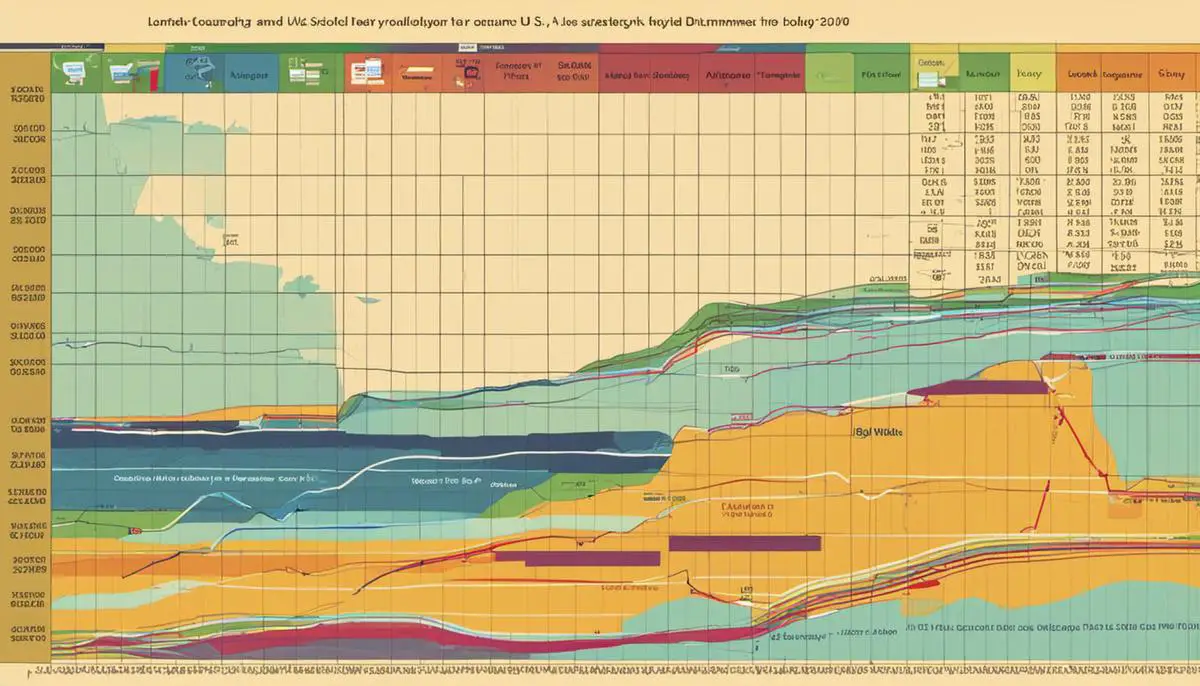Understanding the structure and timing of school holidays is crucial whether you’re a student, parent, or an educator. Not only does it allow for effective planning, but it also enlightens us on how different educational systems operate. This discussion seeks to elucidate on two primary educational systems; the UK and the US. Commencing with a detailed view of UK school holidays, we will delve into the timing, duration, and the legal necessities tied to school attendance. Then, we transition to the US school holidays, revealing key differences such as the extensive summer break and fewer shorter holidays. Moreover, we will cover mandatory education laws and variations between different states’ holiday schedules.
Overview of UK School Holidays
UK School Holidays: A Constant Cycle
UK school holidays are structured around three terms each academic year. These terms are the autumn (fall), spring, and summer terms, each separated by a holiday period.
The autumn term generally starts at the beginning of September and runs until mid-December, with a one week holiday, known as the “October half term,” usually falling in the last week of October. Then there’s the “Christmas holidays,” a two-week break over Christmas and New Year’s period.
The spring term starts in early January and lasts until the end of March or early April, with a one week “February half term” break typically scheduled in mid-February. This term ends with a two-week “Easter holiday.”
Finally, the summer term starts after the Easter holiday and continues until mid-July. Like other terms, there’s a “May half term” break for a week, usually at the end of May or early June.
These three academic terms are intended to distribute the school days throughout the year, providing students with regular breaks to help maximise their learning potential. The exact dates for each term and holiday can vary slightly between different regions within the UK, and from one school to another, but overall the structure stays the same.
In legal terms, UK law requires all children between the ages of 5 and 16 to receive full-time education. This can be at school, at home (known as home education or ‘homeschooling’), or through some other acceptable means.
US School Holidays: Summer Focus
Unlike the UK, the US typically operates on a two-semester system: fall and spring. This is largely due to the country’s significant focus on a lengthy summer break.
The academic year generally starts in late August or early September, after Labor Day, and this “fall semester” continues until mid- or late-December. As in the UK, there’s a “Thanksgiving break” in November, typically lasting a few days, and a longer “winter break” over Christmas and New Year’s, much like the UK’s Christmas holidays.
The “spring semester” runs from January through May, incorporating a “spring break”; a one-week holiday usually scheduled around March or April.
The most notable difference to the UK system is the “summer break” in the US. Beginning in late May or June after the end of the spring semester, this break extends until late August or early September, providing students with a prolonged period away from their studies. It’s far longer than any break in the UK school year, and is often a peak time for family vacations.
Again, legally, children in the US must typically attend school from the age of 6 or 7 until they reach their late teens, depending on the state’s particular law. School-age children generally attend public schools, private schools, or are homeschooled, similar to UK’s system.
With few disparities in framework and scheduling, both the educational systems of the UK and the US meticulously plan their academic calendars. Equally they factor in considerable intervals of holidays, aiming to provide an equilibrium between educational pressure and relaxing breaks. This assures that learners remain enthusiastic and prepared to absorb knowledge.

Overview of US School Holidays
Understanding the US School Holidays
In the United States, the school holidays are not standardized nationally. Instead, the decision rests mainly upon the individual school districts and states. However, there is a generally agreed-upon roadmap that most follow. The significant school holiday is the summer break, which typically lasts from late May or early June to early or mid-August. This break comprises approximately two to three months of the year.
In addition to the extended summer break, other prominent intervals in the US academic calendar include the winter break, spring break, and several public holidays interspersed throughout the year. Winter break generally straddles the end of December and the beginning of January, coinciding with the Christmas and New Year celebrations. Spring break is a week-long holiday usually scheduled in March or April, with exact timing varying rather significantly based on the region and district. Schools also observe numerous public holidays such as Labor Day, Veterans Day, Thanksgiving, Martin Luther King Jr. Day, Presidents Day, and Memorial Day, among others.
The age for mandatory education in the United States varies across states, typically ranging from 5-6 to 16-18 years. Regardless of these discrepancies, every student has the privilege of the same number of school days, typically around 180 in an academic year.
UK School Holidays Vs. US
The U.K and U.S school holiday patterns are not identical, with a significant difference being noticed mostly during the summer break. In the UK, the summer break is comparatively shorter, usually about six weeks, spanding from mid-July to late August.
In the UK, the academic year is segmented into three terms, with each term directly followed by a holiday. The school year kicks off in September and runs till the middle of December, taking a two-week break for Christmas. Schools then reopen in early January for the spring term, which stretches until early April, breaking for a week in mid-February. After this, the summer term runs from mid-April to mid-July, with a week-long break in late May.
Unlike the US, UK mandatory education ranges from age 5 to 16. Moreover, instead of having several minor breaks scattered across the year like the US, UK schools often have prolonged periods of study punctuated by more distinct breaks called ‘half terms’, typically lasting around one week.
To sum it all up, American students usually enjoy a lengthy summer break in contrast to their UK counterparts who experience a mix of more extended study periods separated by shorter holidays, including a significantly shorter summer break. Additionally, differences are noticed in the obligatory education ages and considerable variations in holiday schedules within the US, due to its decentralized education model.

Comparison of UK and US Holidays
School Year Structure in the UK vs US
The UK and the US utilize contrasting organizational structures for their academic year. In the UK, the school year begins in early September and extends through late July the following year. It’s generally split into three terms: the Autumn Term (September to December), the Spring Term (January to April), and the Summer Term (April to July).
In contrast, the school year in the US generally starts either in late August or early September and concludes in late May or early June. The US academic year is segmented into two semesters – the fall semester (starting in August/September and concluding in December), and the spring semester (starting in January and finishing in May/June).
Specific Holidays: UK vs US
There are differences in the specific holidays celebrated within each academic year. In the UK, half-term holidays break up each of the three terms, usually for a week in October, February, and May. There’s also a two-week break for Christmas in December and another for Easter in March or April.
In contrast, US school holidays include a week off for “Thanksgiving” in November, up to two weeks off for “Christmas” or “Winter break” in December, one week off for “Spring Break” usually in March or early April, and numerous individual public holidays such as “Martin Luther King Day” in January and “Memorial Day” in May.
Summer Break Comparison
The length of the summer break varies significantly between the two countries. In the UK, the summer break lasts about six weeks, from late July to early September.
In contrast, the US summer break is usually more extended, about 10-12 weeks from June to August. Historically, the long summer break in the US tied to the country’s agrarian past when children needed to help with summer agricultural work.
Cultural and Policy-Driven Reasons Behind the Differences
In the UK, the school year is typically split into three uniform terms to provide consistent educational periods and break times. This structure is ingrained into UK education law and policy.
In the US, the extended summer break has been a topic of debate. Some suggest a detrimental ‘learning loss’ that occurs over the summer and advocate for a year-round school calendar, more like the UK model. However, traditionalists argue that the long summer holiday offers essential downtime for students and teachers, and is an opportunity for families to travel.
Potential Advantages and Disadvantages
The different structures bring their own pros and cons. The UK’s shorter, more frequent breaks could potentially reduce academic stress and burnout for students and teachers. However, parents may struggle to find short-term childcare during each break.
In the US, the longer summer break gives students more opportunity for rest and family time, internships, or part-time jobs. However, there are concerns about the long break causing learning loss, especially in students from low-income families who may not engage in enriching activities during the break.
Both the education systems in the UK and US demonstrate a diligent effort to balance academic progress with the well-being of the students. They also have to realistically consider their respective logistical realities to plan their school holidays. Each system offers a unique approach to these shared objectives.

Impact on Learning and Family Life
Detailed Comparison of UK and US School Holidays: Their Effects on Learning
There’s a significant difference in the duration of summer vacations in both countries. UK students get six weeks off during summer, whereas their US counterparts have about three months. An extended break such as this one observed in the US could potentially contribute to what’s often referred to as “summer learning loss”, where students unintentionally forget what they’ve learned over the long vacation period. Studies suggest that the relatively shorter summer breaks in the UK may help minimize this learning loss, ensuring that students’ learning continues smoothly. However, it would be an oversimplification to correlate the length of breaks directly with academic performance, as the latter is influenced by numerous other factors like the nature of the curriculum, teaching methods, and the level of a student’s motivation.
Difference in the frequency of holidays is another noteworthy comparison. US education system generally spaces out fewer holidays throughout the year, as opposed to the UK system which is broken into three terms with in-term breaks often referred to as ‘half-term holidays’, and longer holidays during Christmas and Easter. This approach in the UK system means that the students might benefit from regularly timed rest periods, which could arguably contribute to better emotional wellbeing and prevent early burnout. On the contrary, the US system, with longer durations of uninterrupted learning, could have its own benefits in terms of allowing sustained focus on academic tasks.
Balancing Rest and Learning: UK vs. US School Holidays
In terms of balancing rest and learning, the UK’s more frequent breaks can be beneficial – regular relaxation can replenish children’s motivation to learn. That said, shorter holiday periods could mean less time for creative and extracurricular pursuits that are equally crucial for holistic development.
Conversely, the US system’s longer summer break provides ample room for hobbies, travel, summer jobs or internships. Yet, it also presents the risk of students being disengaged from learning for a longer period, potentially making the transition back to school more difficult.
Impact on Family Life and Childcare
For families, coordinating around school holidays calls for planning. In the UK, the diverse holiday periods offer multiple options for family vacations. However, the more regular school breaks mean that parents have to manage child care more frequently throughout the year, which can be a challenge, especially for working parents.
On the other hand, the US’s longer summer break gives families a larger window to plan vacations and outings. However, it also means a larger gap in the middle of the year when parents need to arrange for childcare if they are unable to take time off work. This could potentially be burdensome from a planning and financial perspective.
The Role of Local Flexibility
It is important to note that school holiday schedule varies across school districts in both the US and UK allowing for some local adaptation. The local control allows adaptation based on regional customs, climate, and parent preferences which adds a layer of complexity to understanding the full impact of these differences on learning and family life.

Ultimately, the impact of school holidays on academic performance, student well-being, and family life cannot be overlooked. The variations between the UK and the US systems provide valuable insights on the balance between rest and learning, potential effects on academic performance, and the challenges faced by families in planning vacations or arranging childcare. One might argue that there is no one-size-fits-all solution, and each system holds its unique advantages and drawbacks. What’s most important is an active commitment to adapting and improving the school holiday structure based on the evolving needs of students, parents, and educators.


